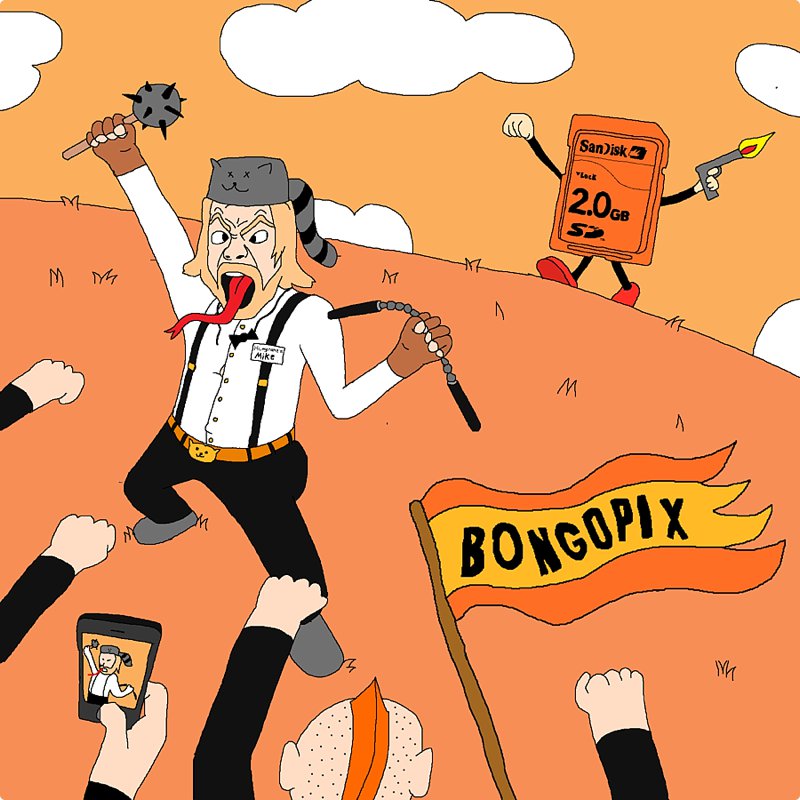

I encountered a memory card corruption incident and I would like to use this as an opportunity to relate my experience to anyone who might find this information useful. My message to my fellow photographer colleagues: memory card corruption is not the end of the world. If (and when!) it happens to you, do not panic. Of course this is easier said than done, but in 99% of cases your data can be easily and conveniently recovered without having to consult a computer or data recovery professional.
Please note that I am not a computer professional by any means. There is a lot about digital memory that I don’t understand. This blog entry is simply a report on how a wedding photographer (that would be me!) successfully dealt with a faulty memory card. I cannot speak on behalf of all photographers and what others may have experienced with corrupt memory cards. There could very well be some flat-out disaster stories out there and I’m truly sorry for anyone that has lost irreplaceable digital photos. I am also not trying to downplay the severity of what it would mean for a wedding photographer to lose digital files. Rather, I want to address a very taboo subject that doesn’t seem to get a lot of attention. There’s a fair bit of information about data recovery out there, I just think it would be nice for a wedding photographer to relate a true account of the experience.
It seems like memory card corruption is an inherent contradiction. No memory card is immune from corruption, but at the same time, data can be retrieved in virtually all instances – provided that there is no serious physical damage to the actual memory card. My corrupt memory card never encountered any physical stress or damage. It cost well over $100, it was a 32GB 600x CF card that I purchased at a well known photography retail store in Toronto. There were no warning signs – the card has worked perfectly ever since I purchased it. The card was also less than 4 months old. Common knowledge suggests that we should only buy the name brands for security sake – but even the established card makers aren’t perfect. You can be guilty of not backing up files, but a corrupt memory card is just a plain evil twist of fate for the hard-working wedding photographer.
My memory card became corrupt while transferring files to my laptop. As I was beginning to transfer files the laptop told me that the memory card was ejected – strange – because my laptop was sitting securely on a table and I did not disturb the card reader or its USB cord. Upon attempting to re-initiate the file transfer the memory card apparently only had 300KB on it. I was about to transfer around 800 files, there should have been at least 10-15GB of data!
The Golden Rule: the moment your memory card becomes corrupt, STOP USING IT IMMEDIATELY. Corrupt memory cards must be admitted into photography quarantine ASAP.
Here’s what I learned. Even if you delete and format a memory card previous data is NOT actually destroyed. When you “erase” and format data on a memory card you basically authorize the memory card to overwrite existing data with new data. You will destroy “lost” files on a corrupt memory card if you continue using the card before attempting to recover the files. This is why you must stop using a corrupt memory card and focus on retrieving the files before doing anything further. If they were able to recover the Rob Ford crack smoking video, you can be fully confident that you can recover allegedly “lost” photos on a memory card.
As far as I understand – and please correct me if I’m wrong – when a memory card becomes corrupt it simply cannot identify the files and mistakenly reports that the card is “empty.” In my incident, Lightroom, PhotoMechanic and my DSLR camera reported that there were zero files on the card. But when I used a data recovery program to retrieve the files, there were actually 1200 RAW files on the card. Not only did I recover the 800 files that I needed, but I also found another 400 files from previous photoshoots. Memory card corruption is simply a communication error between the memory card and your camera/computer. It is not a complete loss of files.
While you cannot necessarily avoid memory card corruption, you should still take very good care of your memory cards. Physical damage to a memory card is drastically more serious. Your chances of being able to retrieve files from a physically damaged card are much lower. In this situation you might have to consult a professional to retrieve the files.
I might be stating the obvious, but here are some memory card maintenance tips I’ve picked up over the years:
– Erase previous files and format your memory cards before every new photoshoot.
– Do not switch memory cards between different cameras during a photoshoot. The camera that formatted the card before the photoshoot should be the only camera that writes to that specific memory card for the rest of the shoot.
– Don’t remove memory cards while the camera is turned on.
– Take advantage of a dual memory card slot (as is featured in the Canon 5D Mark 3). Use 2nd shooters to provide insurance shots. Use 2 cameras simultaneously to photograph key moments during the photoshoot (if you can juggle and if it fits your style).
– Stop using a memory card the moment you notice it do something strange. If a memory card becomes full-on corrupt without any warning sign then retire the memory card after you have retrieved all of the files.
– Change your memory card before you fill it 100% to its limit.
– And of course, backup your files all the time!
Bongopix recommends Card Rescue for data recovery. The program can recover a whole range of file types – including the precious RAW formats from the major camera brands. It worked quickly and the user experience was great. There are several other competing programs so don’t hesitate to consider all of the other options. Best of luck and happy shooting everyone!
Share this story


